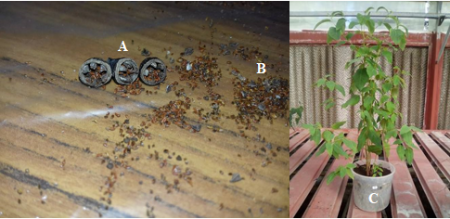
Objective:
Eucalyptus is an enormous and fascinating genus with over 700 species. Most of Eucalyptus species are known as aromatic plants and with medicinal and melliferous uses. Therefore, it’s important to valorize and ensure a continuous regeneration of Eucalyptus species. In this prospect, the main focus of this work was to evaluate seeds viability used to regenerate forests and in order to elevate its production of NWFP.
Context:
Although the current extent of forests continues to decline, at the same time sustainable forest management has never ceased to attract so much interest. Among the species most used in reforestation, hardwoods of the genus Eucalyptus; tree with a trunk diameter of more than 1 meter and a height up to 35 m. Such as E.astringens, camaldulensis, and saligna, which are the most planted and known for their melliferous character and their resin production, E.microtheca whose leaf extracts are used as antiseptic, disinfectant, and E.ovata used for parrot food.
Contacts:
Fedia Derbali, derbali_fedia@live.com, http://www.inrgref.agrinet.tn
Mohamed Larbi Khouja, khouja.larbi15@gmail.com, http://www.inrgref.agrinet.tn
Lamia Hamrouni, hamrounilam@yahoo.fr,http://www.inrgref.agrinet.tn
Further information:
M. Ben Said et al, Novembre 2007, Guide technique de reboisement en Tunisie
Plantes d’ornement en Tunisie; Fleurs ,Arbres, Arbustes; F.Hwala et al
Janan A. et al , 2011, The Effect of Aqueous Leaves Extracts of Eucalyptus camaldulensis on Germination and Growth of Three Weed Species
International Seed Testing Association (ISTA). International rules for seed testing, Seed Sci. Technol. 4 (1976) 3-177